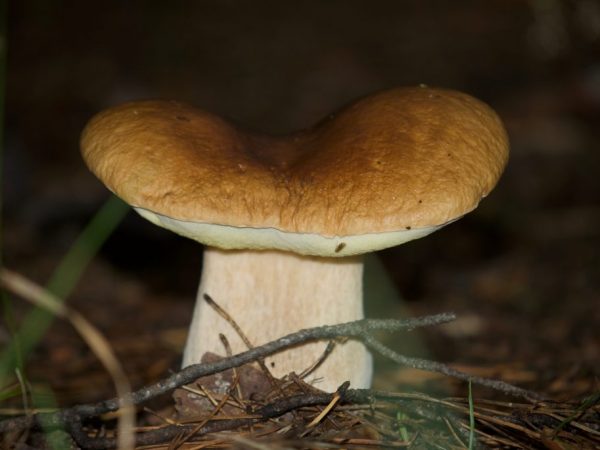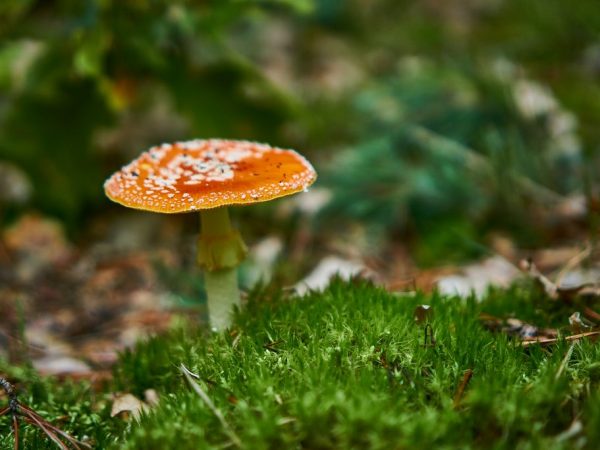What mushrooms grow in the Primorsky Territory
Part of the Khabarovsk Territory beyond the Amur River is called Primorye. This is a huge territory with its own characteristics and climatic conditions. Mushroom picking in Primorye begins in late April and continues until November. Mushrooms in the Primorsky Territory amaze with their abundance and variety.

Mushrooms of Primorsky Territory
General description of mushrooms
Almost all known mushrooms in the Primorsky Territory grow in other regions. In total, there are 800 species, of which only about 300 are suitable for food. Here every 3 years large harvests of porcini mushrooms are harvested.
All mushrooms of the Primorsky Territory are divided according to the degree of edibility into:
- edible;
- conditionally edible;
- inedible;
- poisonous.
The first 2 groups are divided into their taste categories. The first category includes "kings of the forest" - white mushrooms and all their varieties. They are loved for their special strong aroma (especially in dried ones) and exquisite taste. They are served as an appetizer, as a main course or in soups. They are even suitable for a raw food diet.
The same taste category includes milk mushrooms and mushrooms, champignons and volushkas, oak woods and poddubki.
Representatives of the 2nd category are considered a little worse in taste and less aromatic, which include volnushki, boletus, boletus and boletus.
The 3rd category includes mushrooms, mushrooms, morels, waves, etc. They are served as pates, enhancing the flavor and aroma with the addition of spices.
Low aromatic and specific mushrooms of the 4th category. They are conditionally edible and require lengthy careful pre-processing - soaking and boiling. These include forest oyster mushrooms, hedgehogs, cobwebs, dung beetles, etc. If such specimens are improperly prepared, poisoning occurs.
Views
Before going for the harvest, it is better to find out where the mushroom places are in Primorye, which representatives of forest mushrooms should not be touched with your hands, how edibles differ from inedibles, and how to properly handle mycelium so as not to damage it.
Edible
The list of edible mushrooms in the Primorsky Territory is long. The most popular names are:
- garlic mushroom;
- false chanterelle;
- white slimy honey fungus;
- white woman;
- oyster mushroom autumn;
- wave;
- real lump;
- winter mushroom;
- autumn mushroom;
- the chanterelle is real;
- may mushroom;
- oiler;
- the flywheel is real;
- green flywheel;
- shimmering dung beetle;
- obabki (boletus, boletus);
- loading;
- gray row;
- line;
- morel;
- Sakhalin champignon;
- squeak.
They appear at different times of the year, each of them has their own fans who prefer this kind of collection for collection.
Irina Selyutina (Biologist):
Mushroom pickers of the Primorsky Territory have their own signs (as in any other region of Russia), which make it possible to collect good harvests:
- porcini mushrooms usually bear fruit abundantly in two years on the third, but unfavorable weather conditions can "knock down" this system.
- oak, birch and cedar forests located on the southern slopes of the hills are considered the most fungal;
- for the northern regions, the main places for mushroom collection are mixed forests, birch forests and cedar forests;
- in the western part of the region, pine forests are considered to be "respected" mushroom places;
- when there is little rainfall in the mushroom season, mushrooms growing on wood are least affected.
Did you know? The edible russula of Vasilyeva is considered endemic to Primorye, which radically differs from its counterparts in the well-visible remnants of a private bedspread: on the surface of the cap in the form of large patches and in the form of a ring on the leg.
Poisonous

Poisonous mushrooms cause severe poisoning
In the Primorsky Territory, poisoning with poisonous mushrooms occurs every year. Not only because they are collected near roads or residential areas. Edibles are often confused with inedible, or poisonous, counterparts. To avoid tragic mistakes, you need to know the poisonous mushrooms of Primorye, how they look, what they are called and what is their difference. More than 20 species are poisonous and inedible mushrooms of Primorsky Krai.
Common names:
- toadstool is pale;
- pepper mushroom, or pepper oil can;
- boletus purple;
- whitish talker;
- gall mushroom;
- false mushroom;
- fly agaric;
- shaggy dung beetle;
- satanic mushroom;
- the row is striped.
Some of them cannot be handled. Toadstool is capable of transferring toxins through the skin, after which the same poisoning of the body will occur as after eating it. It is often confused with mushroom. The difference is in the "skirt" located on a thin leg. As the cap of the toadstool develops, it flattens. At the base, the leg has a tuberous, well-noticeable and resembling in appearance extension, covered with volva - the remains of a common blanket forming a "pouch" half submerged in the soil.
Irina Selyutina (Biologist):
When poisoning with a pale toadstool, it should be borne in mind that alcoholic beverages used as a "disinfectant" can give a completely opposite result, because alcohol has the ability to easily penetrate the intestinal wall into the bloodstream. He will simply send the toxins of the pale toadstool on a "journey" through the body, which can lead to irreversible processes and death.
Boletus purple is similar to the edible boletus. It is called so by the people: purple boletus. It is characterized by a convex cap covered with black spots and having uneven edges. The skin is velvety to the touch, reddish-brown in color. At the cut site, the pulp changes its color and after a few minutes it turns blue, after a few hours it turns red. This species prefers deciduous forests growing on calcareous soils.
The cep's counterpart is bile. The description of their appearance is similar. Only white never changes color at a break, remains pale white, and in the bile section it acquires a yellowish tint.
False mushroom and pale toadstool are often confused with autumn mushroom. The false fungus has a cobweb blanket on its leg. A toadstool has a clearly visible "skirt" on the upper part of the leg.
Rare species
Mushroom sites of Primorsky Krai have many rare species of forest mushrooms. These include the painted belentius, elmaks and udemansiella burokraynaya.
Mushroom noodles are a beautiful and rare forest mushroom. "Tree ears" and black-brown champignons are found only in Primorye, as a cesarean mushroom and many types of coral mushrooms. They are striking in their external resemblance to marine organisms - coral polyps, growing in bizarre colonies in their appearance.
By the way. In the Far East, the Far Eastern caesar mushroom was described, which differs from the ordinary one with a volva, which has a yellow color inside and the presence of a special yellow cup up to 3 cm in height inside this volva in large specimens. In addition to these features, the Far Eastern caesar mushroom on the surface of the cap does not have the remains of a blanket (dots), and there is always a tubercle in the center of the cap.
The Primorsky Territory has its own principles of "elite" forest mushrooms.Mushroom places in Primorye on the southern slopes of the mountains are rich in Far Eastern limbs, podgruzdki and autumn mushrooms, which local residents consider elite.
Application
The mushrooms of Primorye are most widely used in cooking. They are used for making soups and hot dishes. They are fried, boiled, pickled, salted, dried and frozen.
There are many russula in the forests of Primorye. The russula Kale with a bright purple hat, which has never been heard of in the Moscow region, is good for pickling and its mistresses are happy to store it in the winter.
Honey mushrooms and boletus are collected in large quantities throughout the season.
Far Eastern obabok is suitable for any use. Its pulp is firm and firm, with a pleasant taste. The fruiting body reaches large sizes (up to 25 cm in diameter of the cap). The fungus is found in oak groves in late summer and September.
For hot pickling, drying and salting, the greenish and golden russula, which are often found in deciduous forests under oak trees, are suitable.
White lumps are tasty and not inferior in quality to milk mushrooms.
Pine mushroom is in demand among Asians. They call him matsutake. Among the local population of Primorye, this forest mushroom is considered poisonous and not suitable for food. The Chinese cook it skillfully. It is sold in local markets in China for the preparation of delicacies and medicines. When consumed regularly, it is believed to scavenge free radicals and boost immunity.
Conclusion
A trip to the forest is a great opportunity to relax, gain impressions and gather a good harvest of mushrooms. The main thing is to observe all precautions and not to take unfamiliar or dubious specimens into the basket.



